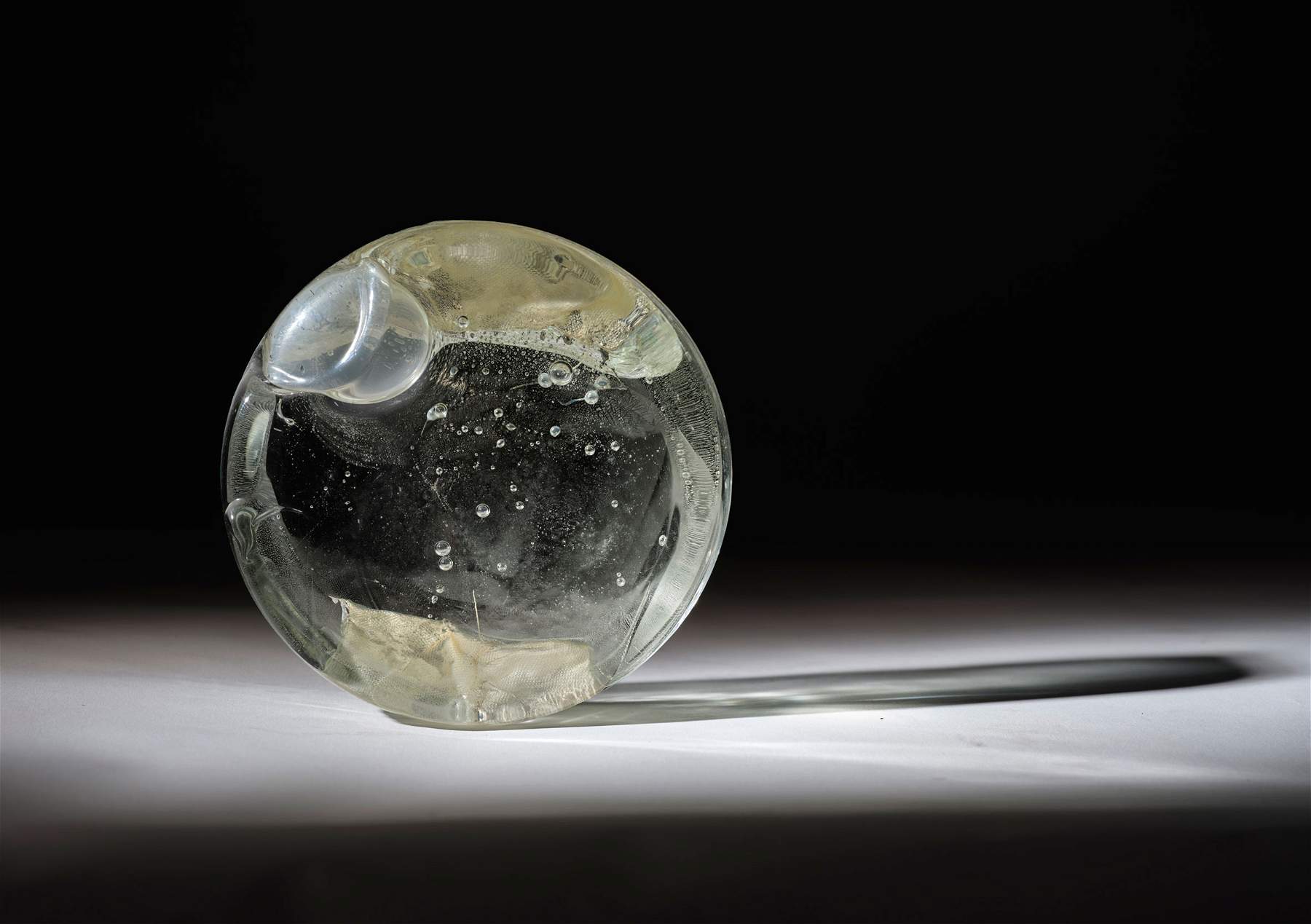Spanish artist Lucía Vallejo Garay (Bilbao, 1975) is featured in a solo exhibition in Venice, at the Magazzino Gallery in Palazzo Contarini Polignac, from September 4 to October 30, 2021. Entitled Fragilité and curated by Nadja Romain, the exhibition is part of Venice Glass Week and presents a new series of works by the Spanish artist in dialogue with Murano glass and the legacy of the Venetian master Giorgione. The exhibition marks Lucía Vallejo’s first exploration of glass and reveals an experimental body of glass and canvas works made possible by the experience of the Venetian company LagunaB.
"When I was doing research years ago for a thesis on the authorship of the painting Christ and the Adulteress,“ the artist explains, ”I immediately fell in love with Giorgione. It was his soul that fascinated me, his introspective, mysterious character. There is something in his paintings, in the gaze of his characters. Of course, his colors also interest me and are sometimes reflected in my work. Sometimes consciously and many times unconsciously, they appear in my work. The unconscious is very powerful and manages to imprint colors like the greens of his famous painting The Tempest or the oranges and reds of Three Ages of Man," Vallejo Garay explains about her encounter with Giorgione’s work. In her previous exhibitions, Lucía Vallejo has already expressed her concern for the circularity of time that unites life and death. Death is the apotheosis of impermanence and the end of all that exists. In her exhibition Memento Mori organized by the Spanish Ministry of Culture, eleven mummies of anonymous women levitated between heaven and earth, questioning the mystery of the death of all beings in the universe.
This mystery and the fate of the souls of this world are recurrent in her work. Now, this continuous research on materials led her to choose glass to represent her vision of fragility and eternity, conceptually and not only visually. The result of this research is visible in Fragilité, where glass bubbles represent a timeless place where souls (canvases sometimes intact, sometimes burned) leave their mark.
"Fragilité is the result of a year of experimentation with glass by Lucía Vallejo, her first exploration of glass,“ explains Nadja Romain. ”For an artist so used to physically engaging with her medium, (canvas and paint) not being able to touch the work, leaving it in the hands of the master, not being able to control the outcome, is unsettling. It means experiencing what it means to let go. The works that can be seen in the exhibition are the result of a long and complex process that began by chance during a conversation in Menorca, where Lucía and I met, and continued in Venice where Lucía traveled regularly to work with me and LagunaB, often during lockdown periods. Time was like suspended in a deserted Venice. There was a kind of magic that transpired in these works, and it was an opportunity for Lucía to discover the lagoon, the fragility of its ecosystems, and the vulnerability of Venice. Lucía created something that is unlike anything I have seen before: canvas and glass together. Fragility, the fate of the human being and the soul are at the center of Lucía’s practice. Working with glass in Venice brings a new dimension to her work. The city serves as a metaphor for the tragic aspect of human destiny. Venice is like this: how can there be such a place beyond its ’fragilité’?"
The production of these sculptures was made possible, as mentioned, thanks to LagunaB, a Venice-based company spearheading the rebirth of Murano as a center of artistic innovation, under the supervision of Alvise Maria de Mezzo, whose experience in glassmaking was instrumental in experimenting with the new techniques that enabled the works to be created.
Lucía Vallejo Garay is a sculptor and art historian. Her works have been exhibited in international galleries and art fairs such as ARCO, Art Cologne or Pulse New York, ZONAMACO. She has collaborated for over a decade with important art galleries and with Distrito4 in Madrid. She is currently represented by Proyecto Hin Mexico. Her work is related to the movement of decomposition in painting, where she expands and frees the materiality of linen recovering the expressive potential of this fabric. The painting loses its two-dimensional condition to become a 3-D object. The next step in his career is installations. Outside Spain he has had several solo exhibitions such as E as veias correm..., at the Museo Medeiros e Almeida in Lisbon, and at the Museo Nacional Soares dos Reis in Porto; Splendor et annuntiatio: no palace has silêncio, at the Palace das Artes in Porto, and in 2021 his solo exhibition Memento Mori in Ca n’Oliver, Menorca. Group shows include his participation in the Eugenio de Almeida Foundation (Évora) and Vitrea at the Milan Triennale, curated by Jean Blanchaert. Since his debut, his works have been exhibited in many important international, public and private collections such as Fundacíon Coca-Cola, Coleccíon Lilly Scarpetta, etc. In 2018 his works were exhibited in the Palace of Arts in Porto as part of a solo exhibition entitled Splendor et Annuntiatio: no palacio ha silencio D3 curated by María de Fátima Lambert. In 2019 she participated in a group exhibition at the San Telmo Museum (San Sebastían), Fundagao Eugenio de Almeida (Evora), and held a solo show at the Lazaro Galdiano Museum in Madrid.
Photo: Lucía Vallejo Garay, Fragility of the soul series.
 |
| The fragility of life in the form of glass bubbles: LucÃa Vallejo Garay on show in Venice |
Warning: the translation into English of the original Italian article was created using automatic tools. We undertake to review all articles, but we do not guarantee the total absence of inaccuracies in the translation due to the program. You can find the original by clicking on the ITA button. If you find any mistake,please contact us.